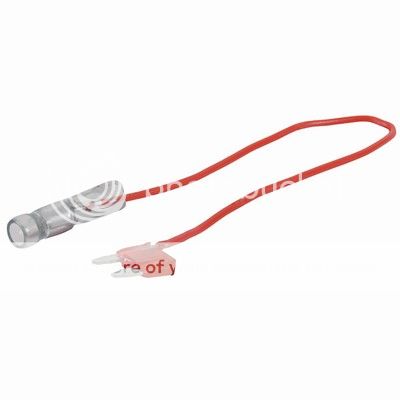I'm about to hardwire in another dashcam using a piggy-back mini-fuse holder. Prior to doing this, I had a quick ferret at it with a multimeter and reckon ideally the piggy-back should be fitted one war around and not the other. It will work both ways, but one way will result in the current flowing to the dashcam flowing through both fuses in series.
How? Well, check out the illustration:

Let's say the left contact in the picture is A and the right contact is B. A is connected to the two sockets above it. B is connected only to the lower socket above it. The red wire is connected to the higher socket above B.
So, I say contact A should be inserted into the battery-side of the fuse socket, rather than the load-side of the socket. Why? Because if B is inserted into the battery-side of the fuse original socket, then the dashcam current has to flow through both piggy-backed fuses in series. This could overload the lower fuse, which has to now handle the current for its original load plus the dashcam.
Does this matter? Probably not, if your dashcam fuse is smaller than the original fuse it was piggy-backed off (so you're getting the intended protection) AND if the total load on the circuit is low, so doesn't blow the lower fuse. But I intend to try and fit it the 'right' way around - space permitting.
Or, maybe I'm completely wrong! Don't think so though. And I've seen comments on Amazon from people moaning about blown fuses in piggyback installations!
Eugene
PS. If I'm right, they really should provide installation instructions.
How? Well, check out the illustration:
Let's say the left contact in the picture is A and the right contact is B. A is connected to the two sockets above it. B is connected only to the lower socket above it. The red wire is connected to the higher socket above B.
So, I say contact A should be inserted into the battery-side of the fuse socket, rather than the load-side of the socket. Why? Because if B is inserted into the battery-side of the fuse original socket, then the dashcam current has to flow through both piggy-backed fuses in series. This could overload the lower fuse, which has to now handle the current for its original load plus the dashcam.
Does this matter? Probably not, if your dashcam fuse is smaller than the original fuse it was piggy-backed off (so you're getting the intended protection) AND if the total load on the circuit is low, so doesn't blow the lower fuse. But I intend to try and fit it the 'right' way around - space permitting.
Or, maybe I'm completely wrong! Don't think so though. And I've seen comments on Amazon from people moaning about blown fuses in piggyback installations!
Eugene
PS. If I'm right, they really should provide installation instructions.



